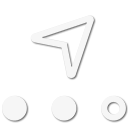ISO, aperture and shutter speed all work as a "three legged stool" meaning that you can't change one without affecting the other two. There is a great basic book that I found very useful - there are several but this one does a very good job of explaining what the OP is curious about - and it is my library.... As well, the Canon Rebel was my first digital camera and a very good one that was a great stepping stone.
For overlanding photography and to give you a quick answer for some gear advice you might be seeking number one is a tripod. A good tripod will be worth it's weight in gold - especially for those low light, star chasing shots of your rig/campsite that we all lust over!! Your camera is capable and a decent lens for it to consider is....
http://www.the-digital-picture.com/Reviews/Canon-EF-24-105mm-f-4-L-IS-USM-Lens-Review.aspx
This is a EF lens and if you at some point upgrade to another body it will make the journey. It provides a good range of zoom for a lot of what you want to do and will be at home at camp or in town. It is a "L" designation (pro lens) so it will last a while and take the dust and bumps that a lens in your overlanding rig will be subject to.
Another thing to consider, as you acquire a couple of lenses, body, a place to keep your memory cards and cable release (for the tripod) is a good backpack bag. This will let you keep all your gear together and take it with you - I like a backpack and there are several but my preference has become ThinkTank after going though more than a few of other well known brands.
I love photography and there are many different styles, types and needs for the type of photography you are doing and the kind of photographer you are/want to be. Do you tote your point-n-shoot along to capture the events of the day for your blog/twitter or are the purpose of your overlanding getting to the places that you will base camp and photograph?
Different cameras for different purposes to be sure but with no question - and just like guns - the best camera is the one you have with you. When I started riding a bicycle for fitness/fun/travel I did not want to lug my Canon 7D and lenses along so I invested in a quality point-n-shoot and have been happy with it. I wouldn't dream of capturing eagles with it or taking it to shoot polar bears.
As far as a general piece of advice - look at pictures - lots and lots of pictures and pick out what you like. Go to a site like flickr and search for the style/type of picture you want to take - look at LOTS and LOTS of them, look at the EXIF data and see what the camera settings were and study what it is about the picture that draws you to it. That will determine your style and what you enjoy about taking pictures. There is an art and science to photography - there are some basic rules and to break them you should know them first.
Hope this makes some sense - take a look at my
www.flickr.com/netdep and see if there is anything there you like. I have about 24k images on my hard drive and have been to a few places to take pictures, sold a few and given a few away -- it's fun and rewarding!!!
Enjoy - take the time if you want or just let the camera do the work if you want.....either way - have fun!!!







